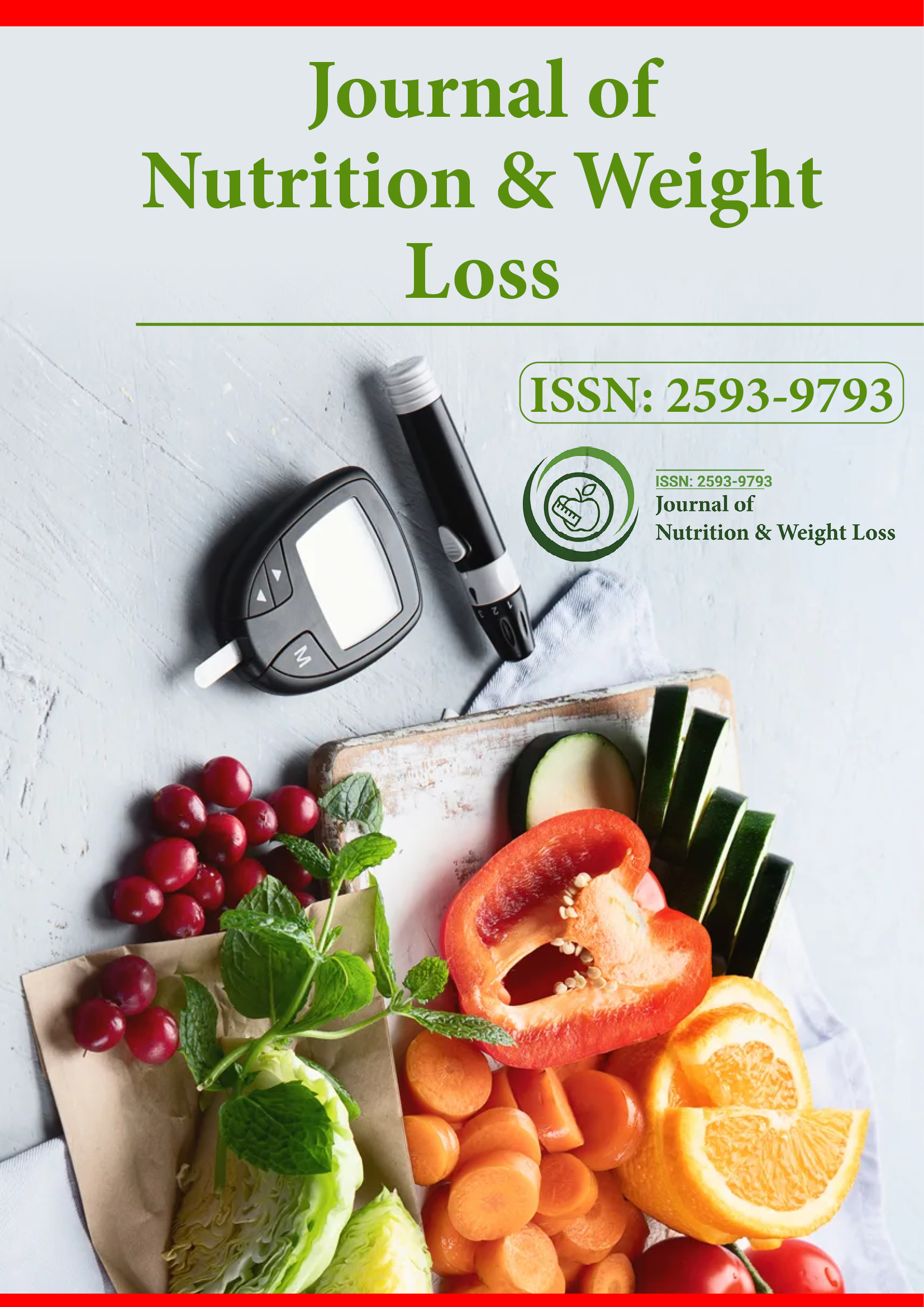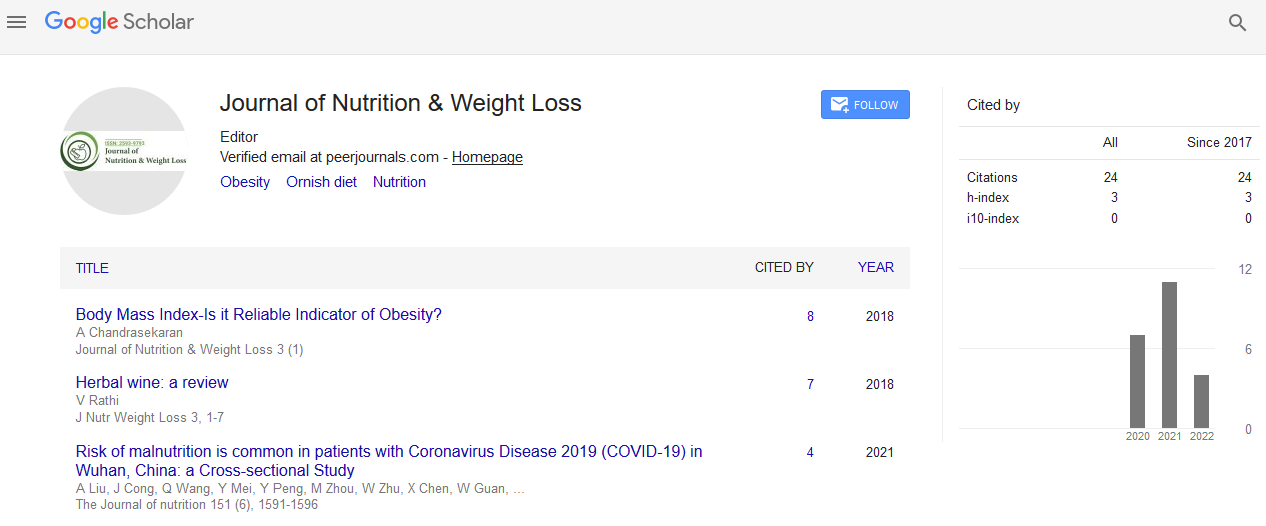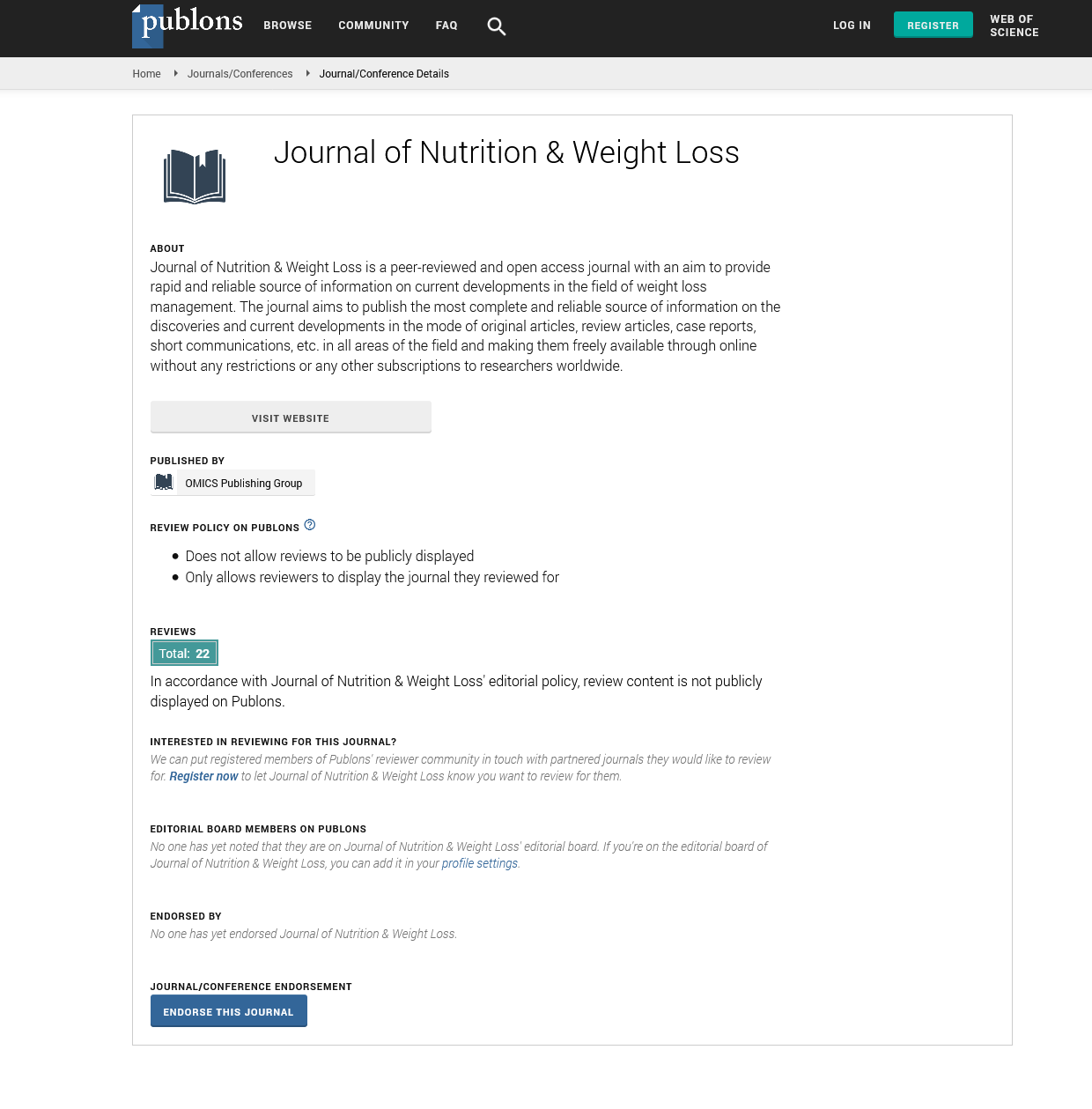Indexed In
- RefSeek
- Hamdard University
- EBSCO A-Z
- Publons
- Euro Pub
- Google Scholar
Useful Links
Share This Page
Journal Flyer

Open Access Journals
- Agri and Aquaculture
- Biochemistry
- Bioinformatics & Systems Biology
- Business & Management
- Chemistry
- Clinical Sciences
- Engineering
- Food & Nutrition
- General Science
- Genetics & Molecular Biology
- Immunology & Microbiology
- Medical Sciences
- Neuroscience & Psychology
- Nursing & Health Care
- Pharmaceutical Sciences
Commentary - (2023) Volume 8, Issue 1
Revolutionizing Land Animal and Aquaculture Nutrition through Nutrient Sensing
Chengdong Kangsen*Received: 21-Feb-2023, Manuscript No. JNWL-23-20977; Editor assigned: 24-Feb-2023, Pre QC No. JNWL-23-20977(PQ); Reviewed: 14-Mar-2023, QC No. JNWL-23-20977; Revised: 21-Mar-2023, Manuscript No. JNWL-23-20977(R); Published: 28-Mar-2023, DOI: 10.35248/2593-9793.23.8.155
Description
Nutrient sensing is a rapidly developing field that has the potential to revolutionize the way we approach land animal and aquaculture nutrition. Nutrient sensing refers to the ability of cells and organisms to detect and respond to changes in nutrient levels, allowing them to maintain proper metabolic function and avoid detrimental health effects. By harnessing the power of nutrient sensing, we can improve the health and performance of animals, increase their resistance to disease, and reduce the environmental impact of animal agriculture.
One of the key benefits of nutrient sensing is its ability to help us optimize animal diets. In the past, animal nutrition was largely based on trial-and-error and a general understanding of the nutrient requirements of different species. While this approach has led to significant advances in animal nutrition, it is far from perfect. Nutrient sensing allows us to better understand how animals process and utilize nutrients, which can help us develop more precise and effective diets. For example, by monitoring the nutrient status of individual animals, we can adjust their diets in real-time to ensure they are receiving the right amount of each nutrient.
In addition to improving animal health and performance, nutrient sensing can also have important environmental benefits. One of the biggest challenges facing animal agriculture is the environmental impact of animal waste. When animals are fed diets that are not properly balanced, they excrete excess nutrients that can lead to pollution of local waterways and contribute to the growth of harmful algal blooms. By using nutrient sensing to optimize animal diets, we can reduce the amount of excess nutrients that animals excrete, which can help mitigate the environmental impact of animal agriculture.
There are a number of different approaches to nutrient sensing that are being developed and tested for use in land animal and aquaculture nutrition. One of the most promising is the use of sensors that can monitor the nutrient status of individual animals. These sensors can be implanted in the animal's body or attached to its skin, and can provide real-time feedback on the animal's nutrient levels. This information can then be used to adjust the animal's diet to ensure it is receiving the right amount of each nutrient. Another approach to nutrient sensing involves the use of molecular tools to monitor the expression of genes involved in nutrient metabolism. By studying changes in gene expression in response to changes in nutrient availability, we can gain a better understanding of how animals process and utilize nutrients. This information can then be used to develop more precise and effective diets.
Finally, there is also a growing interest in the use of probiotics and other supplements to modulate nutrient sensing pathways in animals. By introducing beneficial bacteria or other compounds into an animal's diet, we can help promote healthy nutrient sensing and improve metabolic function. This approach has shown promise in a number of different animal species, and is being actively researched for use in land animal and aquaculture nutrition. Overall, nutrient sensing has the potential to transform the way we approach animal nutrition. By better understanding how animals process and utilize nutrients, we can develop more precise and effective diets that improve animal health and performance while also reducing the environmental impact of animal agriculture. While there is still much to learn about nutrient sensing and its applications in animal nutrition, the field is rapidly developing and holds great promise for the future of animal agriculture.
Citation: Kangsen C (2023) Revolutionizing Land Animal and Aquaculture Nutrition through Nutrient Sensing. J Nutr Weight Loss. 8:155.
Copyright: © 2023 Kangsen C. This is an open-access article distributed under the terms of the Creative Commons Attribution License, which permits unrestricted use, distribution, and reproduction in any medium, provided the original author and source are credited.


